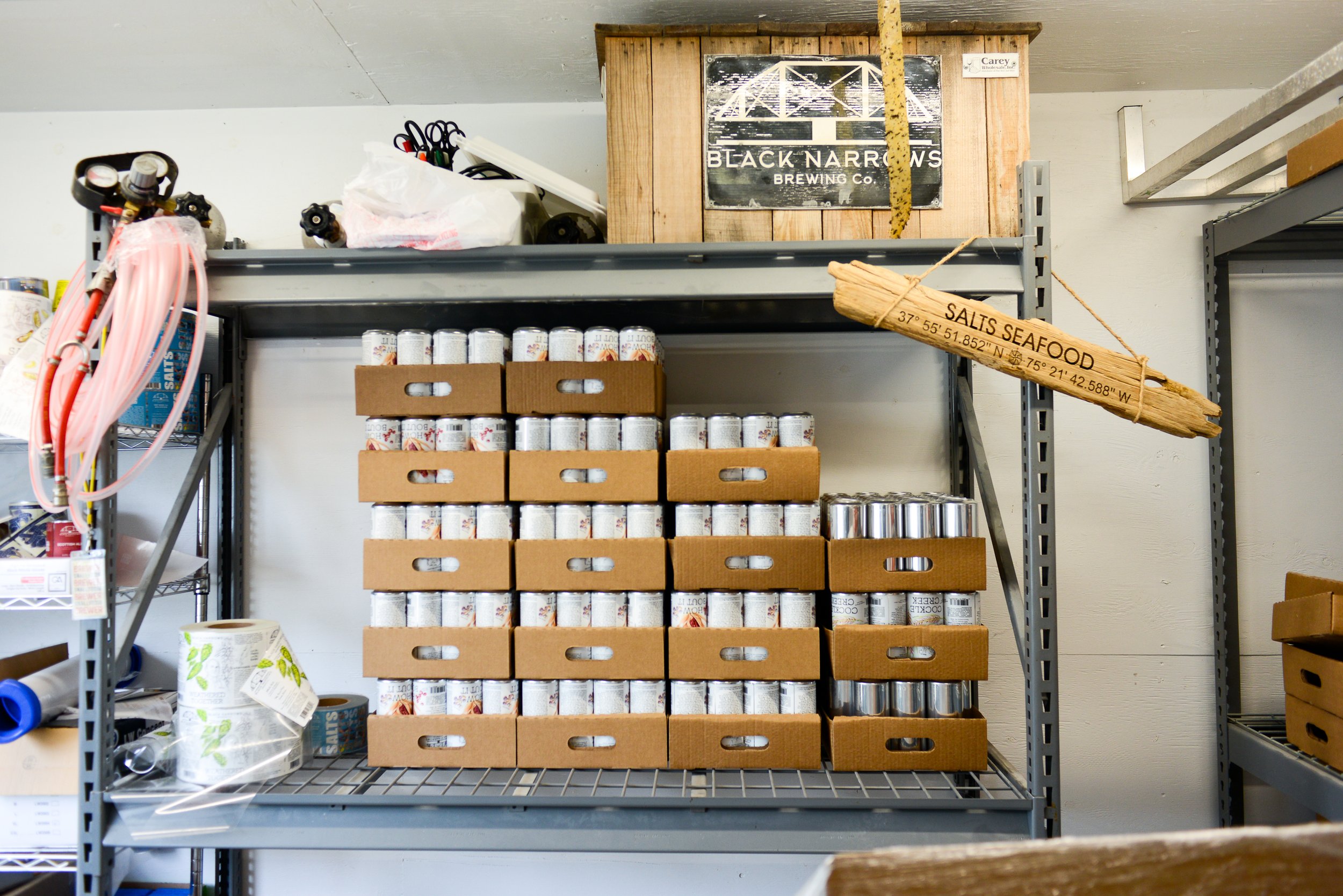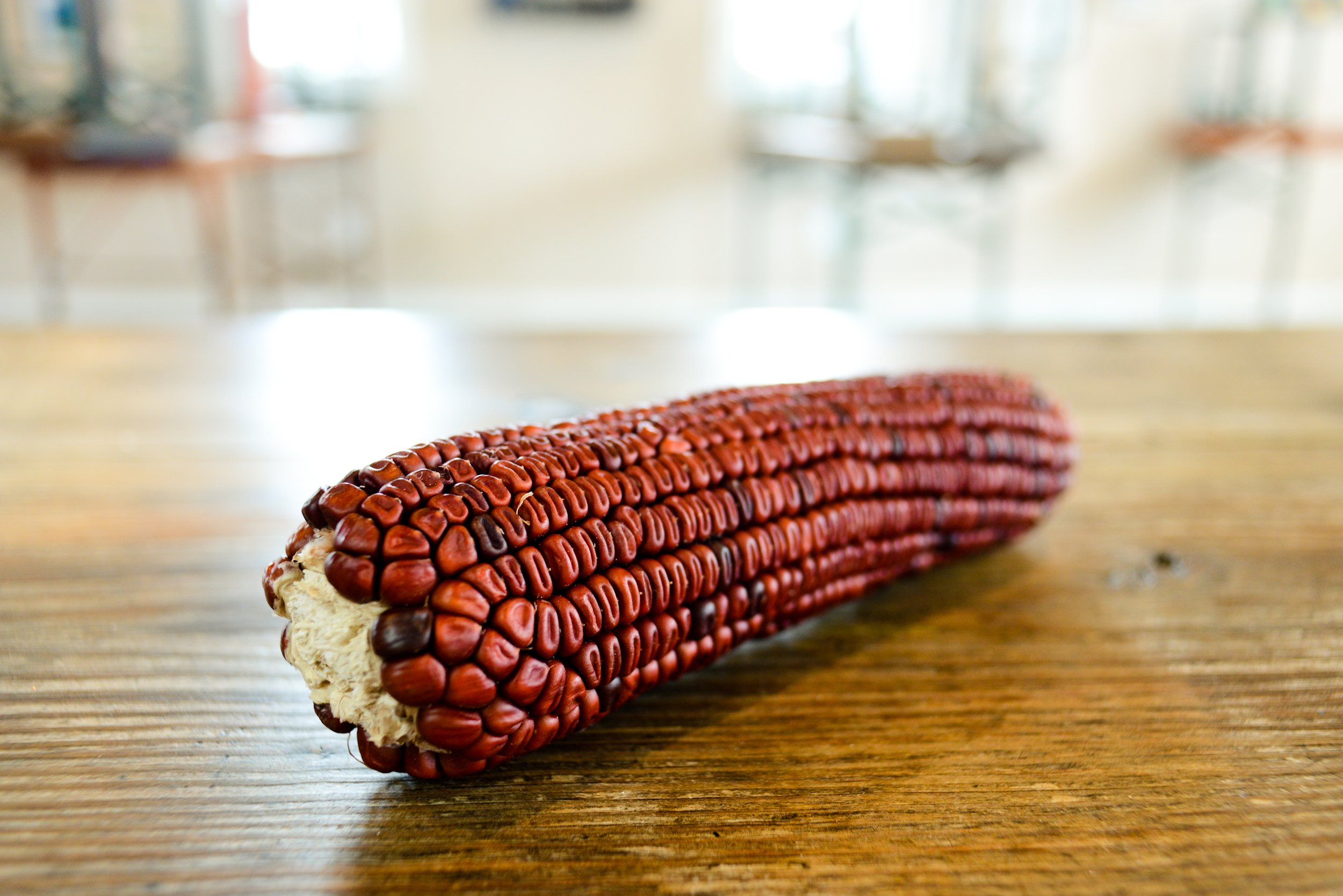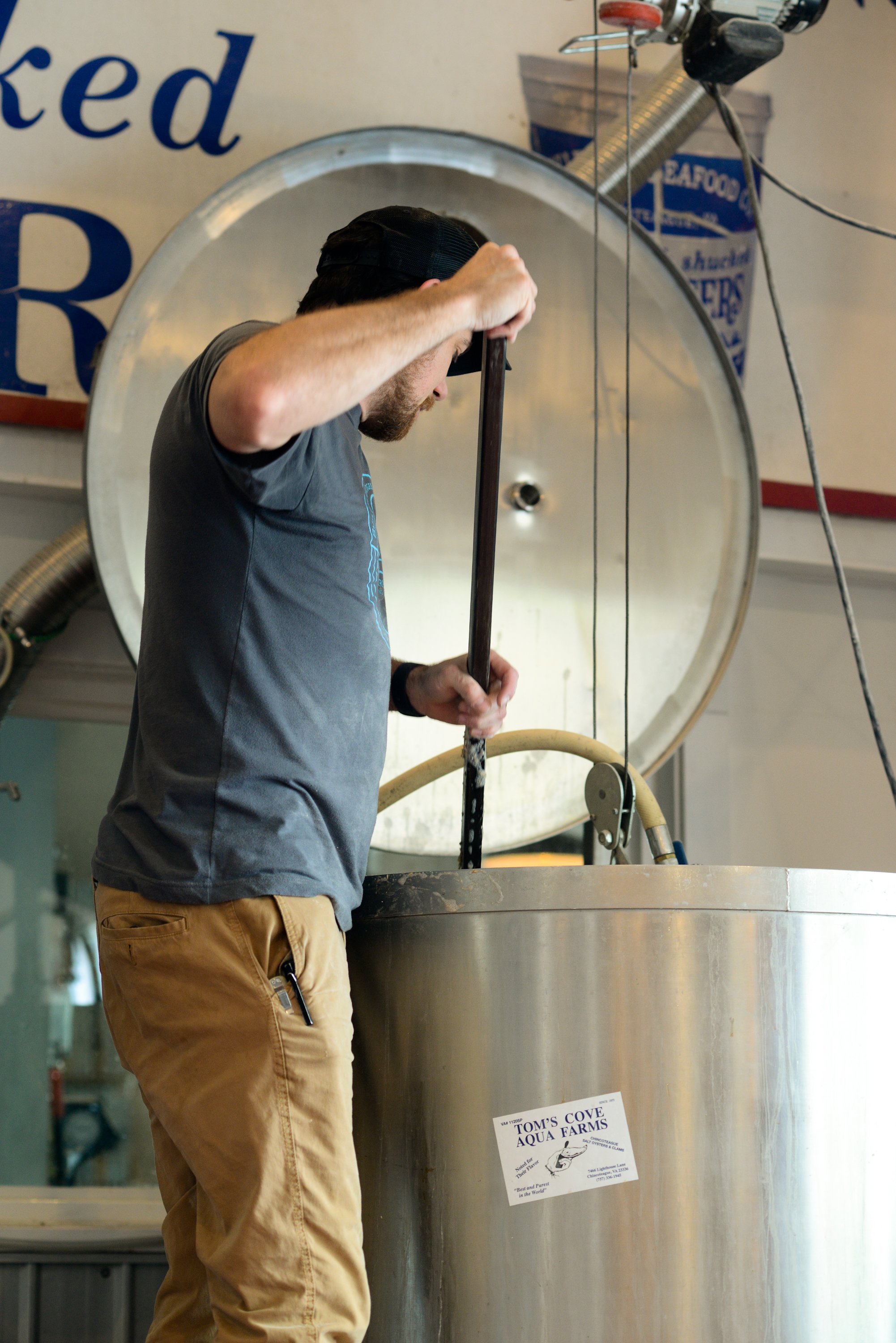Pure Shores — Black Narrows Brewing of Chincoteague Island, Virginia
Editors note: We were saddened to read of Black Narrows’ decision to close its doors for good in February 2024. The team at Pellicle would like to wish Josh and family the very best for the future.
***
Separated from the rest of Virginia by the expanse of the Chesapeake Bay, Virginia’s Eastern Shore feels like being at the very edge of the United States. At the northernmost edge of the Eastern Shore is Chincoteague Island, where the Atlantic winds sweep low clouds across the flat grassland, a place of coves, inlets, and straits. It is here, on the last remaining inhabited Atlantic side island in Virginia, that Josh Chapman decided to start his brewery, Black Narrows.
A native of Alexandria, Virginia, Josh started his own brewery in 2017, having previously worked at Washington DC’s well-regarded Bluejacket Brewery, and before that, he worked as a chef and even as a pastor.
Photography by Mark Stewart
“[We] pulled up a waterway map of Chincoteague and its surrounding areas,” Josh tells me when I ask how he and his wife, Jenna, chose the name for their brewery. “Both our eyes went straight to the space around the old bridge and right there, just before it was the Black Narrows, that last waterway before the old bridge that was the gatekeeper to our home away from home. We knew immediately that was it.”
The old bridge itself is the inspiration for the brewery’s logo.
Like many other Virginians, Josh’s introduction to Chincoteague came as a child, when his outdoorsy parents would bring him and his family to the island for summer holidays. Eventually, it became his lifelong ambition to start some kind of business here. His father-in-law, who was once also Josh’s homebrewing partner, suggested starting the brewery on the island.
Black Narrows was the first brewery to establish itself on the Eastern Shore, opening on New Year’s Eve 2017. Josh brews on a single vessel, 6 hectolitre (5 US barrel) brewhouse that looks like a stainless steel brew-in-bag setup, constrained less by space than it is the weight restrictions of the suspended floor in the former oyster shucking factory where it lives.
In a business where “local” has come to mean the location of the brewery itself, Josh is ploughing his own furrow that spreads out from Chincoteague Island to the broader Eastern Shore, and from there to the whole of Virginia. Remarkably, almost 90% of his ingredients are sourced from his home state. The majority of his hops are grown about 50 miles down the shore from Chincoteague Island, Josh only brews with malt from Murphy & Rude Malting in Charlottesville, and for his Gose, he uses oyster liquor, the water from inside an oyster shell, sourced from local oyster shucking factories that would otherwise pour it away.
The beer that’s perhaps most emblematic of Josh's dedication to using local ingredients is his corn lager, How Bout It, brewed with an heirloom variety of corn called Bloody Butcher that has been grown on the Eastern Shore since the middle of the 19th century, and which Josh has become a steward of. When the farmers that supplied him with the corn decided they wanted to retire, Josh committed to taking their final harvest and keeping a supply of seed corn from which to secure his supply, and Jeff Bloem at Murphy & Rude committed to malting the rest.
Unlike the big brand brewers, such as Miller, that use flaked corn as an adjunct, resulting in a sweet, slick character in the beer, the corn in How Bout It is malted before being used. During the malting process, changes occur within the grain that replaces the sweetness you find in macro lagers—and even bourbon—with a distinct nuttiness, almost like the very centre of an almond. If you didn’t know that the beer in your glass was made with corn, it would never cross your mind.
While Bloody Butcher dates back to the 19th century, Virginia’s history of brewing with corn goes back to the very earliest days of English colonisation—despite corn being a staple crop of the indigenous peoples of Virginia, there is little evidence of it being used to make alcohol. In 1620 one George Thorpe, originally from Gloucestershire, put his brewing knowledge to use in malting corn and making beer from it, wrote:
“Wee haue found a waie to make soe good drinke of Indian corne as I test I haue diuers times refused to drinke good stronge Englishe beare and chosen to drinke that.”
That Thorpe, and presumably other colonists, preferred beer made with malted corn over strong English beer is a testament to this native American grain’s place in the history of brewing in Virginia.
Thomas Jefferson—the third President of the USA—was another Virginian that had beer brewed with corn. Indeed, he avidly sought out Joseph Coppinger’s “New American Brewer and Tanner” chiefly because it contains a method of “malting Indian corn”. In the autumn brewing season of 1814 Jefferson’s enslaved chef Peter Hemmings would perform this malting process “with perfect success”.
Josh’s approach to brewing is not just about sourcing local ingredients, but also brewing beer for his community on Chincoteague.
“I wanted to highlight time and place in both the ingredients and the concept of the beer I brew,” he tells me. “It’s important for me to be excellent without being exclusive. I don’t want to be perceived as pretentious, especially as the first brewery on the Eastern Shore. There are lots of Bud and Miller drinkers here, and so I wanted something relatable but adjacent to what they are used to.”
At the opposite end of the spectrum is Josh’s use of Chincoteague oysters in several of his beers, including Salts—a Gose made with oyster liquor. Salts is quite literally never the same beer twice, as the flavour of the oysters themselves changes throughout the year, and from bed to bed, giving the beer differing degrees of salinity, umami, and brininess in each batch. Oysters also provide more than just ingredients for Josh’s brews: they have become the source of his most intimate relationship in the brewhouse, his yeast.
““There are lots of Bud and Miller drinkers here, and so I wanted something relatable but adjacent to what they are used to.””
“I don’t really make the beer, the yeast just needs to do its thing,” he says. “Brewing is like life and even like parenting, you have to do everything with intention and care, but at the end of the day everything comes down to the yeast”.
The majority of Black Narrows beers are fermented using a house yeast strain that Josh refers to as a “culinary endeavour”. Isolated from Chincoteague oysters pulled fresh from the water, Josh’s “oyster yeast” was the product of the desire to showcase Chincoteague Island’s most renowned export.
“A beer to champion [the oysters] was an easy call”, Josh says. “Gose was the obvious style to build off, especially with Chincoteague oysters being known worldwide as “salts”. An oyster gose made perfect sense, but after figuring out how to impart the oysters and using local grain, I still felt like we hadn’t fully explored how to showcase the island.”
What this would eventually inspire some might call crazy, but having spent time with Josh, it actually makes perfect sense; he decided to see if there was brewing yeast on an oyster. While brewing a Kölsch at Bluejacket, he kept back some wort and pulled a Chincoteague oyster from the sea, leaving it to sit in the wort overnight on the kitchen counter.
Josh would then deliver the flask of oyster-inoculated wort to Jasper Akerboom of Jasper Yeast in Northern Virginia, who he had come to know well while working at Bluejacket. Jasper separated more than 150 different microbes from the fermentation, of which two were the strains that have become the Black Narrows’ house yeast.
According to Jasper, there were actually four distinct yeast varieties he managed to isolate from Josh’s original fermentation, a process which took two months to complete. Of those four, two were very very hard to work with, producing off flavours and aromas, and struggling to ferment maltose, the main sugar in wort. The two remaining strains were much more reliable, fermenting at higher temperatures, (close to 30°C) without producing higher alcohols, or other unpleasant flavours commonly produced during fermentation at such temperatures.
“[The yeast] has that pleasant farmhouse, saison, refreshing character that is fresh and crisp, and that people like,” Jasper tells me.
“If you start a brewery, you are not going to get very wealthy,” he continues. ”Especially if you do something where you try to go to an area and use everything local and support everyone there, it’s very admirable, and [Josh] pulled it off. He’s a very humble guy and works very hard.”
“Values” is a word that comes up time and time again as Josh wrangles the brewing system that almost killed his dream on the very first brew day. He tells me how the recirculation process did not occur as expected, so the electric heating element was dry rather than covered in wort. Smoke began to pour from the system as Josh frantically raised the grain cage, only for the support arm to buckle under the weight of the grain. Thankfully Josh’s hop supplier is also an engineer and was able to re-weld the arm in a way that would not pose a threat to life and limb.
It's clear as we speak that Josh values his relationships with his suppliers deeply, going on to explain that he views craft beer as: “a values proposition industry that needs to follow through on those values as local, community-focused businesses in more than being just a source of tax revenue for local governments.”
For him, it’s imperative that a brewery fully embraces the meaning of the word “local” and understand how they fit into their broader community. A truly local brewery both takes what the surrounding community provides in ingredients and gives back to the community a beer bearing the identity of that community. That community focus means that one of the aims of Black Narrows is to take care of local farmers by providing a ready market for their produce. Being a community brewery is also a way for Josh to live out, in a very practical way, his faith.





































